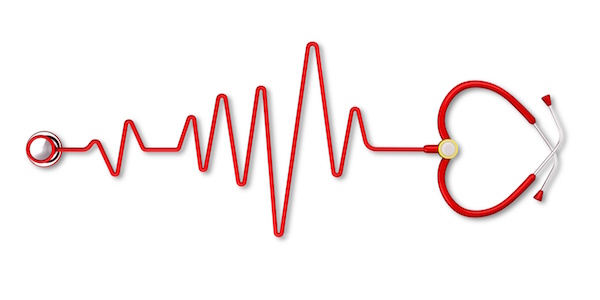
TUESDAY, May 24 (HealthDay News) — Women newly diagnosed with an irregular heartbeat known as atrial fibrillation have a significantly higher risk of death than women without this condition, suggests new research.
Analyzing data on more than 34,000 middle-aged women, researchers found that women with recently diagnosed atrial fibrillation had an all-cause mortality rate of 10.8 per 1,000 person-years, compared to 3.1 per 1,000 person-years for women without atrial fibrillation.
After adjusting the data for other factors that might contribute to the increased risk of death, the researchers still found that a new diagnosis of atrial fibrillation more than doubled the risk of mortality.
“In a population of women with a low burden of cardiovascular disease at baseline, participants with new-onset atrial fibrillation had approximately a twofold increased risk of death compared to women without new-onset atrial fibrillation,” said the study’s lead author, Dr. David Conen, an assistant professor of internal medicine at the University Hospital Basel in Switzerland.
“However, it is important to emphasize that in our study, the absolute risk of adverse events among women with new-onset atrial fibrillation was fairly low, with only 2.2 percent of the deaths in this population attributable to atrial fibrillation,” said Conen.
Results of the study are published in the May 25 issue of the Journal of the American Medical Association.
Atrial fibrillation is a type of irregular heartbeat. Instead of pumping blood effectively, the atria (the heart’s top chambers) momentarily quiver, which allows blood to pool in the heart, according to the American Heart Association (AHA). When blood pools, clots can form that can be expelled into the bloodstream when the heart starts beating properly again. If such a clot travelled to the brain, it could cause a stroke, reports the AHA.
Atrial fibrillation often causes no noticeable symptoms, according to Dr. Teresa S.M. Tsang, author of an accompanying journal editorial. Some people feel atrial fibrillation as heart palpitations.
The current study included an analysis of 34,722 women who participated in the U.S. Women’s Health Study from 1993 to 2010. The women were all older than 45 (median age was 53), and 95 percent were white. At the start of the study, none of the women had atrial fibrillation or signs of any other cardiovascular disease.
During the study, which had an average follow-up of 15.4 years, 1,011 women developed atrial fibrillation. Three-quarters of these women also had high blood pressure. Sixty-three women with atrial fibrillation died during the study period.
After adjusting for other factors that could contribute to an increased risk of death — such as body mass, diabetes, high blood pressure, high cholesterol, smoking and more — the researchers found that women who were diagnosed with atrial fibrillation during the study had a 2.14 greater risk of all-cause mortality and a 4.18 times greater risk of dying from a cardiovascular cause, compared to women without atrial fibrillation.
“The main message from this study is that atrial fibrillation is not benign. It’s associated with an increased death risk, and a number of studies have shown this association,” said Tsang, director of cardiovascular research at the University of British Columbia and Vancouver General Hospital in Canada.
When women are diagnosed with atrial fibrillation, it’s important that they receive a full cardiac work-up, preferably one that includes echocardiography (ultrasound of the heart) to see if there are any underlying issues with the heart, she said. It’s critical to identify other cardiac risk factors, such as high blood pressure and high cholesterol, and to aggressively treat such conditions and to encourage healthy lifestyle changes for these women, Tsang added.
“Once it’s first detected, don’t just treat atrial fibrillation. Aggressively modify cardiac risk factors. Or, ideally, deal with these risk factors before atrial fibrillation even happens,” said Tsang.
Conen said that major risk factors for atrial fibrillation are age, obesity and elevated blood pressure. “Therefore, weight loss and the treatment of elevated blood pressure can help reduce the development of atrial fibrillation,” said Conen.
“There is an opportunity to improve the risk of death among individuals with new-onset atrial fibrillation through both prevention and optimal management of associated co-morbidities, including elevated blood pressure and obesity,” he added.
More information
To learn more about atrial fibrillation, visit the American Heart Association.

